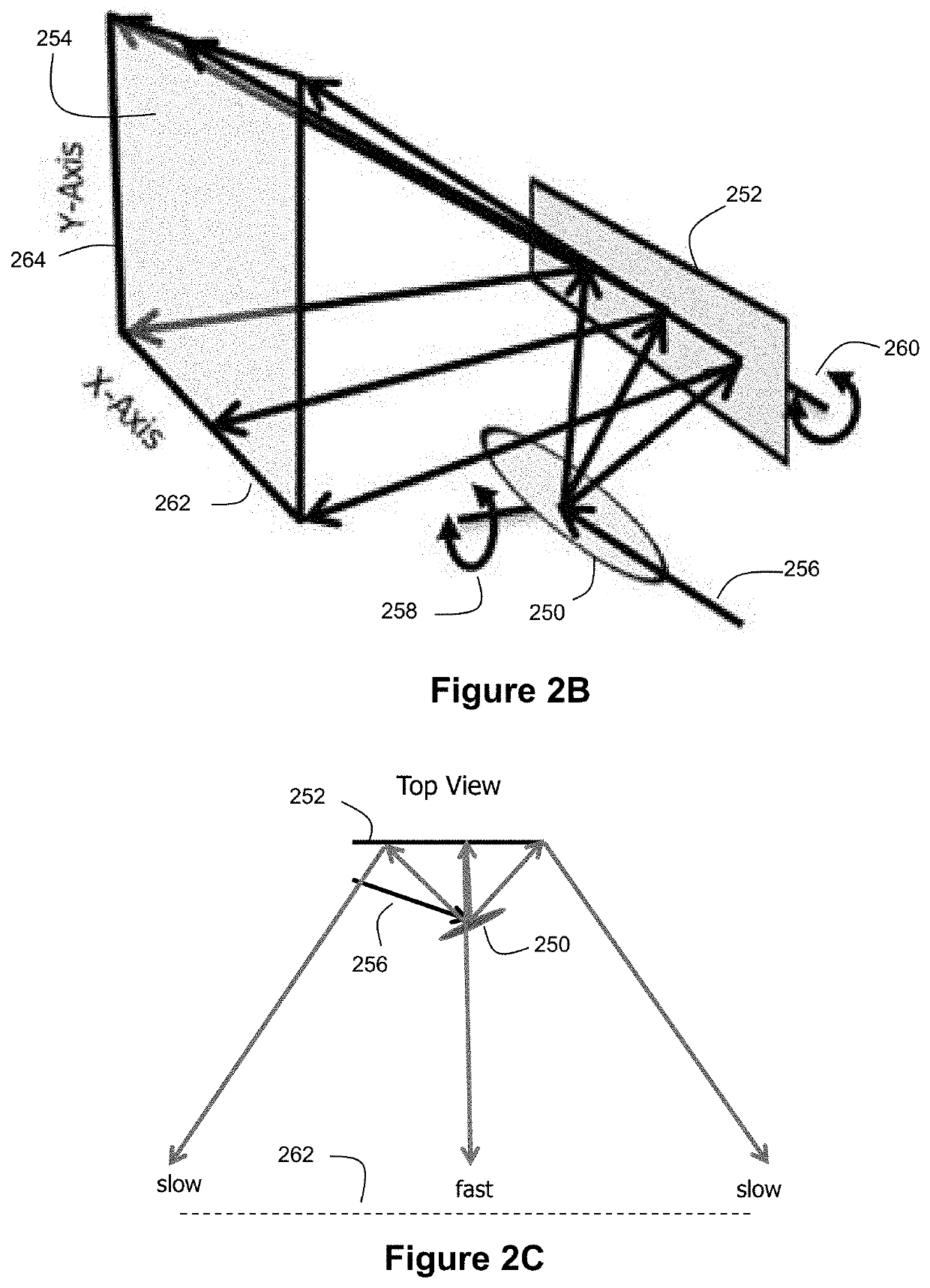Ladar transmitter with optical field splitter/inverter for improved gaze on scan area portions
a technology of optical field splitter and inverter, which is applied in distance measurement, surveying and navigation, instruments, etc., can solve the problems of limited effective use of costly applications, large data bandwidth use, and large size of conventional ladar solutions for computer vision problems
- Summary
- Abstract
- Description
- Claims
- Application Information
AI Technical Summary
Benefits of technology
Problems solved by technology
Method used
Image
Examples
Embodiment Construction
[0031]FIG. 1A illustrates an example embodiment of a ladar transmitter / receiver system 100. The system 100 includes a ladar transmitter 102 and a ladar receiver 104, each in communication with system interface and control 106. The ladar transmitter 102 is configured to transmit a plurality of ladar pulses 108 toward a plurality of range points 110 (for ease of illustration, a single such range point 108 is shown in FIG. 1A). Ladar receiver 104 receives a reflection 112 of this ladar pulse from the range point 110. Ladar receiver 104 is configured to receive and process the reflected ladar pulse 112 to support a determination of range point distance [depth] and intensity information. In addition the receiver 104 determines spatial position information [in horizontal and vertical orientation relative to the transmission plane] by any combination of (i) prior knowledge of transmit pulse timing, and (ii) multiple detectors to determine arrival angles.
[0032]In example embodiments, the la...
PUM
 Login to View More
Login to View More Abstract
Description
Claims
Application Information
 Login to View More
Login to View More - R&D
- Intellectual Property
- Life Sciences
- Materials
- Tech Scout
- Unparalleled Data Quality
- Higher Quality Content
- 60% Fewer Hallucinations
Browse by: Latest US Patents, China's latest patents, Technical Efficacy Thesaurus, Application Domain, Technology Topic, Popular Technical Reports.
© 2025 PatSnap. All rights reserved.Legal|Privacy policy|Modern Slavery Act Transparency Statement|Sitemap|About US| Contact US: help@patsnap.com



